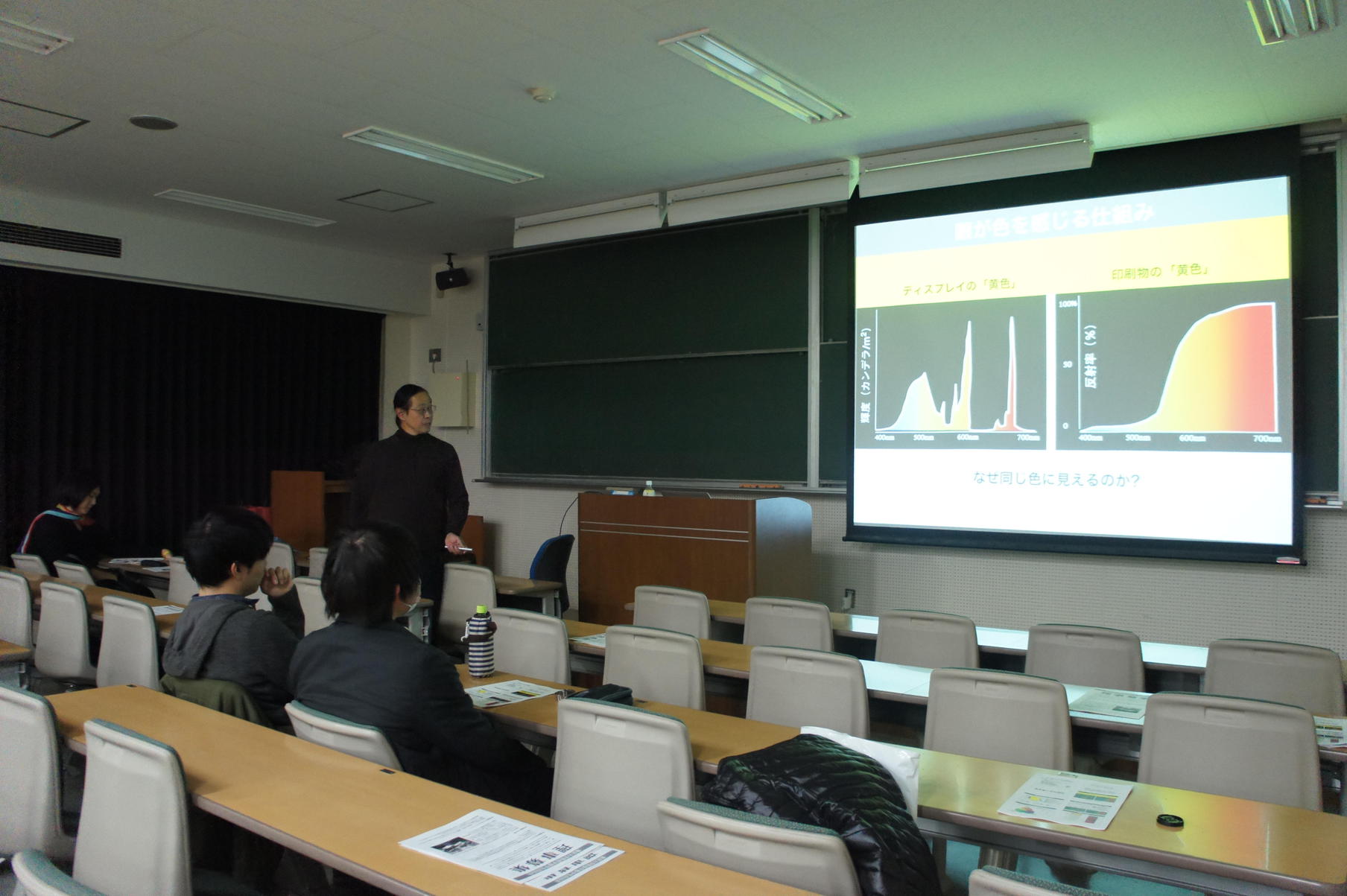I Want to Learn How to Think Beyond Academic Disciplines
Vol.8 2016.11.30 ITO kei
Diversity in Color Perceptions and Color Universal Design

Human eyes have several kinds of cells that perceive light. Because different individuals have different sets of such cells, there are instances where some people have trouble distinguishing between colors or color names.
To help users navigate easily, different colors are used in signage in town or public transportation, on the screens of electronic devices, maps, diagrams in books or textbooks, etc. Color universal design takes care to ensure that everyone can easily perceive such differences among colors. Slight modification of colors or paying extra attention to designs can make a marked difference in how easily people can distinguish between colors.
Color universal design started in Japan about a decade ago. By raising various actual examples, I will explicate the diversity in how colors are perceived and color universal design that caters to the diversity.
- Instructor
-

- ITO kei
- Associate Professor at the Institute of Molecular and Cellular Biosciences, the University of Tokyo/Deputy Director General at the Color Universal Design Organization (an incorporated nonprofit organization) He was born in 1963 at Hyōgo prefecture. He graduated from the Department of Physics, Faculty of Science, the University of Tokyo and the Graduate School of Science, the University of Tokyo. Before working at his current position, he worked for Johannes Gutenberg University Mainz as a scholar and the National Institute for Basic Biology as an assistant. He himself is a person with extreme protanope. He is a pioneer of the color universal design which is the knowledge of neuroscience regarding color recognition applied to a barrier-free environment. He organized the specified nonprofit corporation the Color Universal Design Organization in 2004.
- View
「色弱」の人にとって、改善される前の地下鉄の表示は識別しづらかった。しかし、わかりやすく色分けすることで、誰もが使いやすいようにするカラーユニバーサルは、現在では、交通機関や案内標識、教科書や電子機器の操作説明など、多岐にわたって広がっている。しかし、浸透するまでには、1、できるだけ多くの人に見分けやすい配色を選ぶこと、2、色を見分けにくい人にも情報が伝わるようにすること、3、色の名前を用いたコミュニケーションを可能にすることという基本理念をもとに、企業や社会に働きかける実践があった。伊藤先生の講義は、科学的な知見を社会の中で実践する視座を教えてくれるものだった。
comments(最新2件 / 4)
- 2016年12月14日 12:03 reply
今回の授業では、色弱の人々にも配慮したバリアフリー社会を実現するため、実際にCUDOを中心としてどのような取り組みが行われているかに焦点が当てられた。必要不可欠なものとして先生から提示されたのは、科学者がその知見を公共に還元するという道義的責任を果たすことであった。私も一介の学生に過ぎぬとはいえ、学問の道を志す者であり、特に直接現実で役に立つような応用ではなく基礎の研究に関心を持っている。今回の「ダークな側面」として提示されたこの学者の孤高を貫こうとする態度、応用研究を目指す同僚に圧力をかけるような態度は、正に私自身が将来取りかねない危険な姿勢だ。学問がそれ自身のためにある面も否定はできないだろうが、しかし社会に還元されてこそという面もまた欠かせぬものだ。多様な学問への取り組みを認め、実際に革新を齎そうという風土を応援してゆかねばならぬということを、肝に命じたい。
- 2016年12月14日 17:15 reply
僕には色弱の友達がいる。
ある時ぼくはカフェラテを飲んでいた。そのとき彼は「お前それなにのんでんの?抹茶??」ときいた。僕は驚いて、「は??笑。全然色違うじゃん笑」と言った。このとき僕は彼が色弱であることを知らなくそもそも色弱についてよく知らなかったので、全く仕方のないことであったし、彼も全く怒る様子も見せなかった。
また、彼はこんな体験もしたという。小学校のとき塾で、先生にある地図についての説明を求められたのだが、全くわからず、怒られた。その地図は、赤と緑に塗り分けられていたのだ。
この講義を聞いて、上記の体験を思い出しながら、色弱の人への理解を深めることの大切さを深く感じた。ユニバーサルデザインはとても重要であり、世の中を出来るだけ多くの人の住みやすいものにしていく必要があると思った。
ありがとうございました。
- 2016年12月15日 09:43 reply
色の見え方の違いが社会においてどう反映されているのか、もしくはされるべきなのかについて考える良い機会だった。何が少数派であり何が異常なのかということについてはよく考えられている以上に恣意的なのだと思う。
Post a Comment
- Other Lessons
今回の授業は色を見分けにくい人についてより深く考えるものだった。ちょっとした看板や標識もすべての人に分かってもらうことが大切なので、色を見分けにくい人の存在を心に留めて社会に出ていこうと思えました。ありごとうございました。